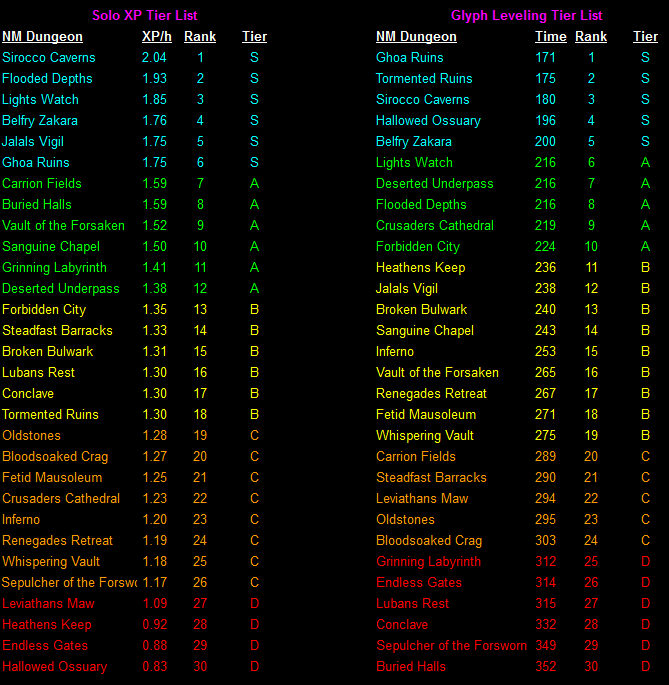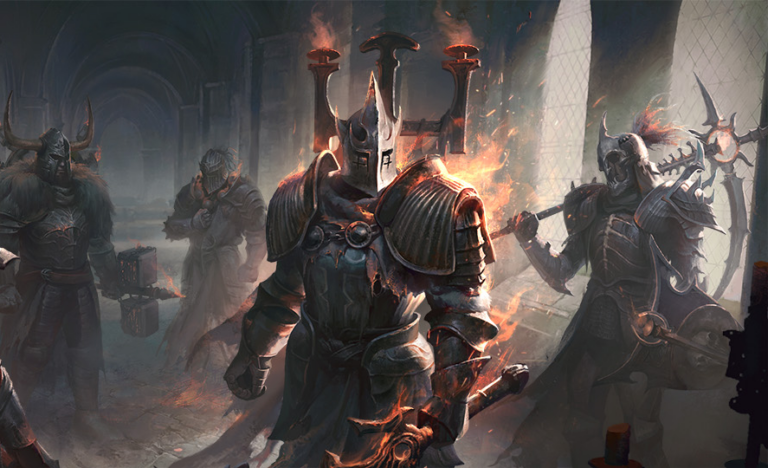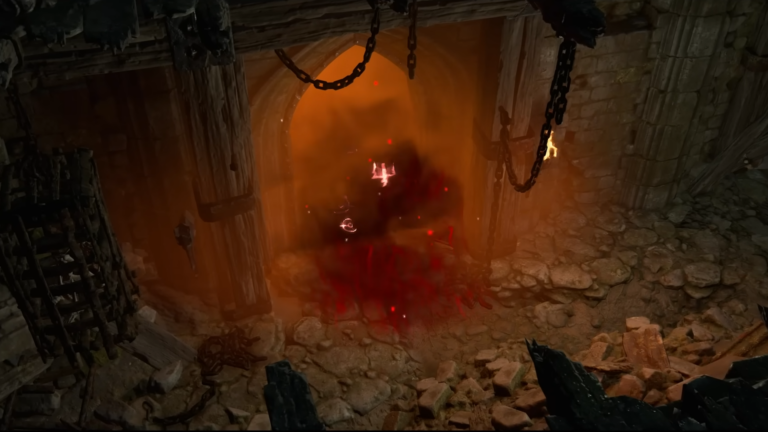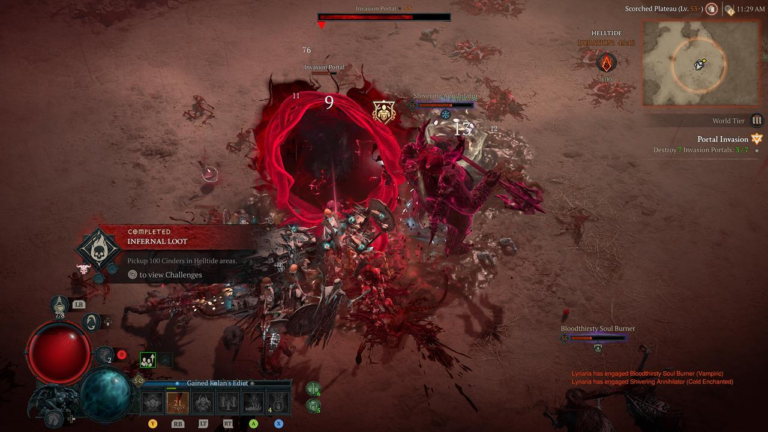Diablo 4 has a damage system that not everyone can understand at a first glance. You may have heard of the Diablo 4 'Damage Buckets' theory, but how exactly does it work?
In this article we aim to explain the damage formula for players so they may better understand how to efficiently deal more damage to the otherworldly forces.
Sources of Damage
To understand how damage and damage buckets work in Diablo 4, first we need to understand where our base damage originates from.
Base Damage
- Weapons are the initial source of the damage. The higher your weapon's item power, the higher the damage it can do.
- When you score a damage hit, the weapon damage is then multiplied by skill damage percentage value (found in the skill tooltip).
- Some classes use combined total damage from all of their equipped weapons to scale their skills damage (ex. Sorcerer). Other classes use certain weapons for certain skills (ex. Barbarian). Their weapon as a source of damage changes depending on that. You can check which weapon is used by viewing skill information.
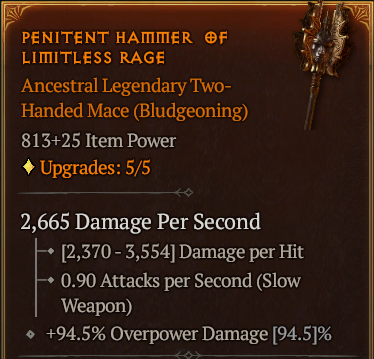
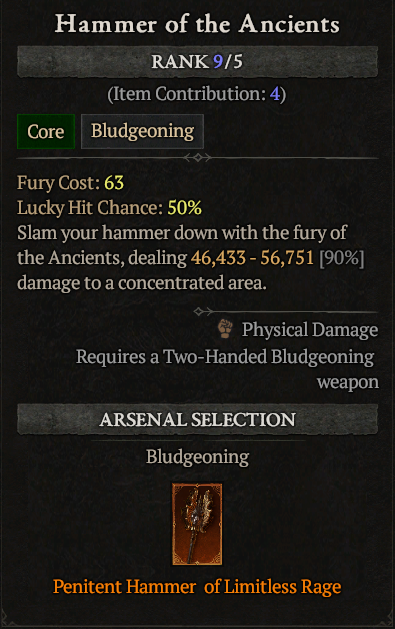
Flat Damage
Some skills and aspects don't scale from weapon damage - we call these sources of flat damage. Examples of it are Thorns and the Aspect of Burning Rage. Aspects that give flat damage can be scaled and increased via player level and rarity of equipment it is found on (Normal, Sacred, Ancestral).


Diablo 4 Damage Buckets Explained
There are several damage multipliers (or so-called Diablo 4 'damage buckets') in the game that further increase our base damage. These multipliers are: Additive Modifiers, Vulnerable Damage Bonus, Critical Damage, and Global Multipliers. All of these can be acquired from equipment sub-stats, Aspects, skill passives, and Paragon Glyphs.
1. Additive Modifiers Damage Bonus
All damage bonuses that belong in the additive category will have a (+) symbol in their tooltip descriptions. Examples of Additives are as follows:
- Damage Vs Bleeding
- Damage Vs CC
- Damage Vs Close
- Damage Vs Distant
- Damage Vs Elites
- Damage Vs Healthy
- Damage Vs Injured
- Damage Vs Knocked Down
- Damage Vs Slowed
- Damage Vs Stunned
- Damage while Fortified
- Damage while Healthy
- Damage with Core
- etc.
The sum of all these values will equate to one multiplier applied to your Base Damage (Total Additive Bonus = Additive 1+Additive 2+Additive 3...). This means stacking multiple of these stats will result in less effectiveness, the diminishing returns are much more apparent as you unlock these bonuses from the paragon board and glyphs.

Formula so far:
Base Damage * Total Additive Bonus
2. Vulnerable Damage Bonus
Vulnerable is a status effect that can be inflicted on enemy units via skills for a limited time. This results in the enemy taking additional damage based on the baseline 20% damage bonus + Total Vulnerable Damage Bonus found in your stats tab. A Vulnerable enemy is shown to have a purple HP bar.


Formula so far:
Base damage *Total Additive Bonus *Vulnerable Damage Bonus
3. Critical Strike Damage
Critical Strikes have a base chance of 5%. This can be further increased by skill passives, Aspects, class stats and sub-stats from gloves and rings.
Be aware that some skills can not benefit from Critical Strikes - namely, any Damage over Time skill (unless stated otherwise).

When Critical strikes occur, you will see the damage numbers shown in yellow, and the damage multiplier will be based on your Critical Strike Damage. Critical Strike damage may be increased by affixes on weapons, rings, Paragon Glyphs, and Gems.

Additionally, there are modifiers such as "Critical Strike damage against Vulnerable enemies" "Critical Strike Damage with Core skills" etc. These stats increase overall Critical Strike damage when conditions are fulfilled.
These modifiers would apply as follows: Total Critical Strike damage = Critical Strike Damage + (Critical Strike Damage against Vulnerable enemies + Critical Strike Damage with Core skills).


It is notably harder to take advantage of this multiplier as two stats need to be effectively raised to produce optimal results. However, it gets easier to get both these stats up further into the game because of increased sub-stat values from higher item power equipment. Therefore aiming for these stats at mid-game to late-game progressions is more recommended.
Formula so far:
Base damage *Total Additive Bonus *Vulnerable Damage Bonus *Total Critical Strike Damage
4. Main Stat Damage Bonus
The most straightforward multiplier out of the bunch. Each class has a main stat associated with them (ex. Rogue - Dexterity, Sorcerer - Intelligence). The main stat varies from class to class, but can be easily checked by hovering to see which of your stats gives “Skill Damage”.
One point in the main stat increases the total Skill Damage by 0.1%.

Formula so far:
Base damage *Total Additive Bonus *Vulnerable Damage Bonus *Total Critical Strike Damage *Main Stat Damage Bonus
5. Global Multipliers
Global multipliers include Skill effects, Aspects, and Paragon Glyphs that have the (x) symbol in their tooltips. Usually, these multipliers have conditions to fulfill - for example “Deal x% of damage when Barrier is active”.



Formula so far:
Base damage *Total Additive Bonus *Vulnerable Damage Bonus *Total Critical Strike Damage *Main Stat Damage Bonus *Global Multiplier(s)
6. Overpower
It is a mechanic that adds one final boost to your damage and is an additive increase rather than a multiplier. Overpowered hits scale with your character's sum of HP, Fortified HP, and Overpower Damage Bonus stat found in certain class stats and weapons sub-stat rolls.
The base chance to proc Overpower hits is 3% with no other means to improve it. Certain Aspects and skills, however, can guarantee overpowered hits.
If Overpowered and Critical Strike occurs in one instance of damage, it is called Critical Overpowered. Blue and Orange numbers Indicate Overpowered and Critical Overpowered hits respectively.



Formula so far:
Base damage *Total Additive Bonus *Vulnerable Damage Bonus *Total Critical Strike Damage *Main Stat Damage Bonus *Global Multiplier(s) + Overpower Damage
Final Damage Formula
Now that we listed all possible multipliers, the damage formula should be as follows:
Base damage *Total Additive Bonus *Vulnerable Damage Bonus *Total Critical Strike Damage *Main Stat Damage Bonus *Global Multiplier(s) + Overpower Damage = Final Damage
Damage Calculation Example:
Let's say we have 100 base damage after scaling our weapon damage with skill damage value, and these multipliers are affecting us:
- Additives with conditions fulfilled which are +50% Damage to Close Enemies and +75% Physical Damage Bonus;
- We are fighting a currently Vulnerable enemy and we have a 100% Vulnerable damage bonus;
- The damage dealt is a Critical Strike with our Total Critical Strike Damage being 120%;
- Our main stat is 200 which would result in 20% more Skill damage;
- Global multiplier from an Aspect that results in an overall 40% increase of damage, and another one from a Paragon Glyph that adds a 20% multiplier.
- No Overpower is happening.
100 base damage * (1 + (0.5 + 0.75 Additives)) * (1 + 1 Vulnerable Damage Bonus) * (1 + 1.2 Critical Strike Damage) * (1 + 0.2 Main Stat Bonus) * (1 + 0.4 Global Aspect Multiplier) * (1 + 0.2 Global Glyph Multiplier) = 1108.8 Final Damage.
Weapon Speed
Weapon Speed does not directly add to your damage but does increase your DPS by increasing the casting speed of skills - except for skills that have locked animation length (Ex. Whirlwind).
All attacks are skills (including basic attacks), therefore having an increased Weapon speed does benefit energy generation which results in more comfortable skill rotations. One can further improve Weapon Speed through Attack Speed sub-stats on gear, skill passives, aspects, and Paragon nodes.



Conclusion
To properly banish demons in Diablo 4, one has to dive into different damage buckets and have a lot of different damage multipliers that are distributed equally.
Easy-to-achieve modifiers (Damage vs Close, Damage with Core, Damage with Physical) may be more desirable to have rather than harder-to-fulfill conditions (Damage vs CC, Damage vs Injured, Damage vs Healthy).
This ensures consistent damage throughout all types of content. Experimentation is key!


